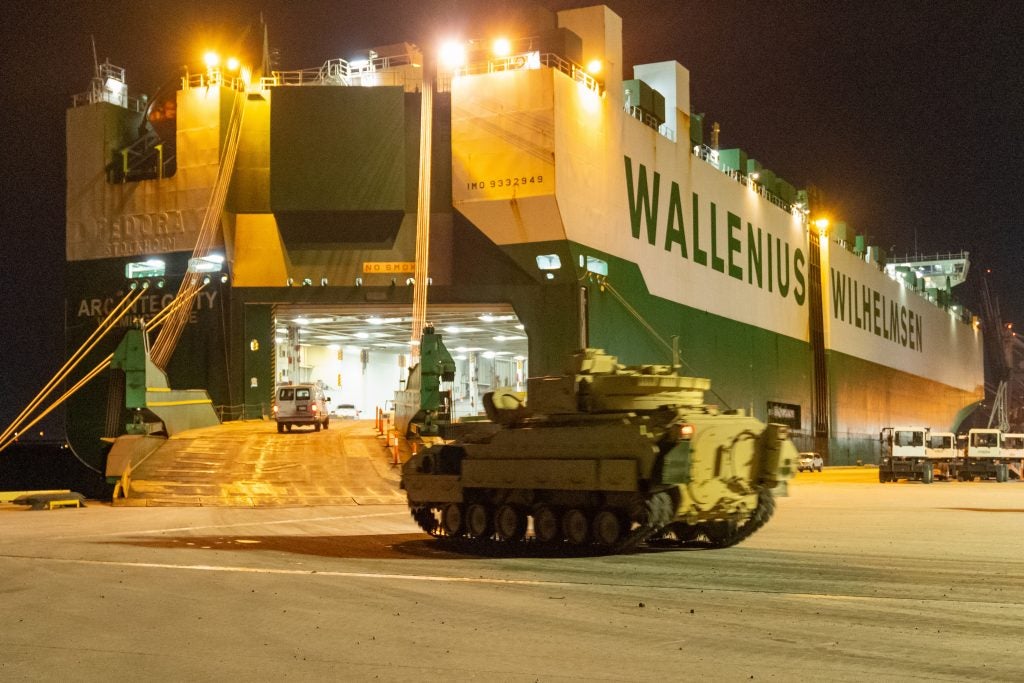Upgraded M2A2 Bradley IFVs En Route to Ukraine
From the imagery released by the US Department of Defense it appears that Ukraine may be receiving the upgraded M2A2-ODS SA variant of the Bradley Infantry Fighting Vehicle (IFV). The shipment contains more than 60 Bradleys, according to the Department of Defense, and is expected to complete its journey in early February.
The US Transportation Command is delivering the first shipment of Bradleys to Ukraine as part of the United States’ $2.85 billion military aid agreement announced earlier this month. From the series of photographs published on 30 January, it appears that the Bradleys are either M2A2-ODS or M2A2-ODS SA configuration vehicles. There are a myriad of Bradley variants with the US Army currently operating the M2A3, introduced in 2000, and the new M2A4 upgrade which began fielding last year.
The two ODS (‘Operation Desert Storm’ improvements) variants are difficult to tell apart externally. The ODS-SA has capabilities similar to the M2A3 with improved digitized electronic systems for optimal situational awareness, inter-vehicle network connectivity and communication with other vehicles and improved fire control with a digital command and control system but lacks the commander’s independent sight.
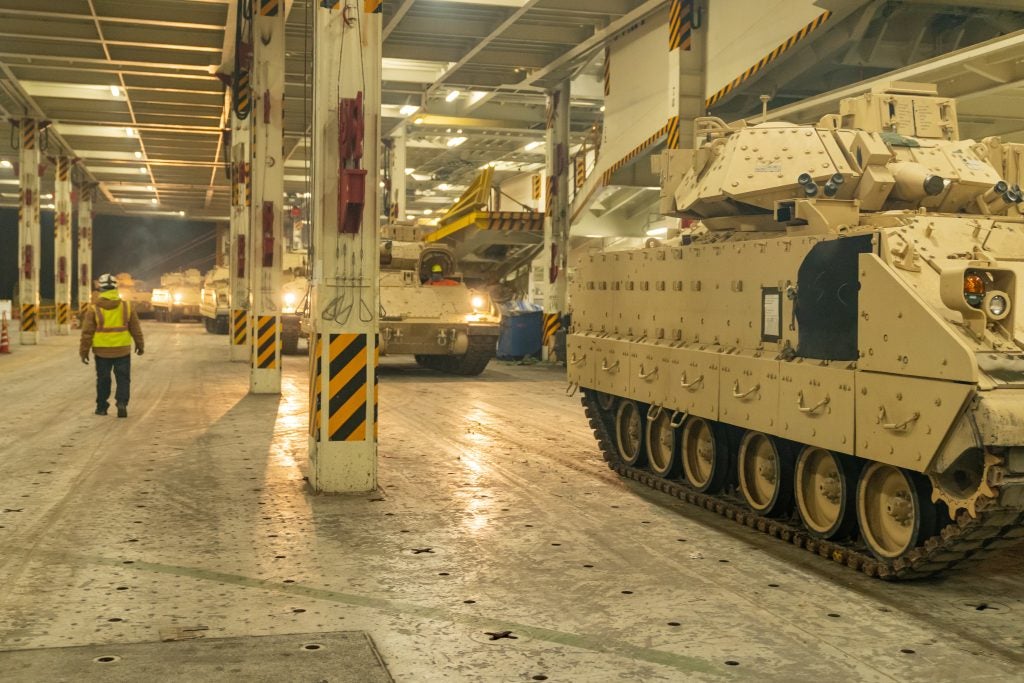
During a background briefing a senior defense official said that “in addition to the large security assistance package announced [mid-January] by the Department of Defense with significant additional air defense and armor capabilities for Ukraine, multiple nations announced similar significant support to include Germany and Netherlands’ contributions of Patriot missile air defense capabilities, Canada’s procurement of a [National Advanced Surface-to-Air Missile System] and the United Kingdom’s donation of Challenger 2 tanks … just to name a few”.
The Bradleys appear to be shipping with the barrels of the 25mm M242 chain guns removed, this is a common practice for storage and shipping and they will likely be mounted on arrival. Some of the photographed vehicles show signs of exterior rust on their decks and some wear and tear but are all operational and were loaded under their own power.
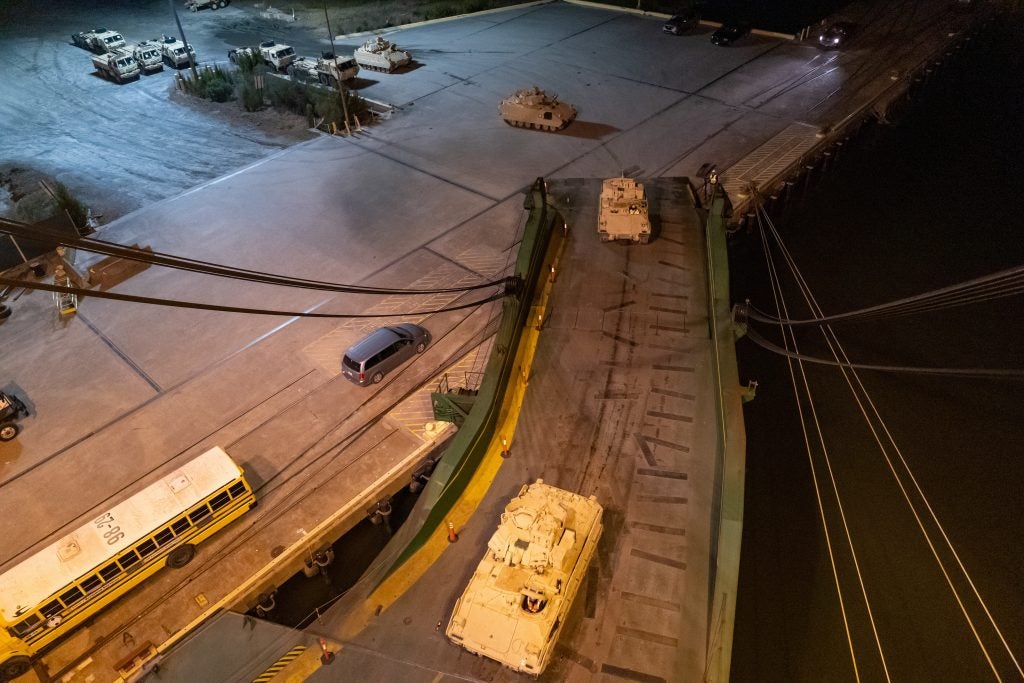
The US government has so far promised the transfer of 109 M2A2 Bradleys, with the first 50 announced on 6 January, and a subsequent 59 announced on 19 January.
The Bradleys have been loaded onto the ARC Integrity, a vehicle carrier operated by Wallenius Wilhelmsen, at the 841st Transportation Battalion’s dock in North Charleston, South Carolina. The vessel is listed as headed for Southampton in the UK. The vehicles should complete their Atlantic crossing by next week.
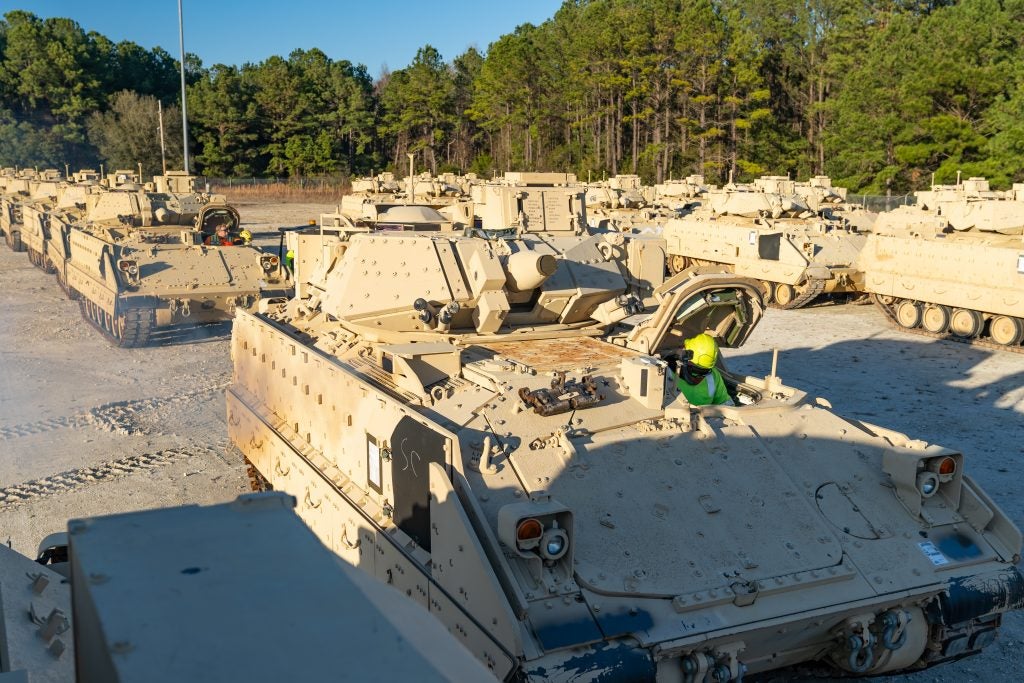
Lt. Col. Rebecca D’Angelo, the 841st Transportation Battalion’s commander, noted: “the Bradley is a very powerful vehicle that we are providing to the Ukrainians,” she said. “This is going to hopefully enhance their capabilities to provide forward advancement in the battlefield and regain lost grounds, by having equipment that matches or exceeds what the Russians have.”
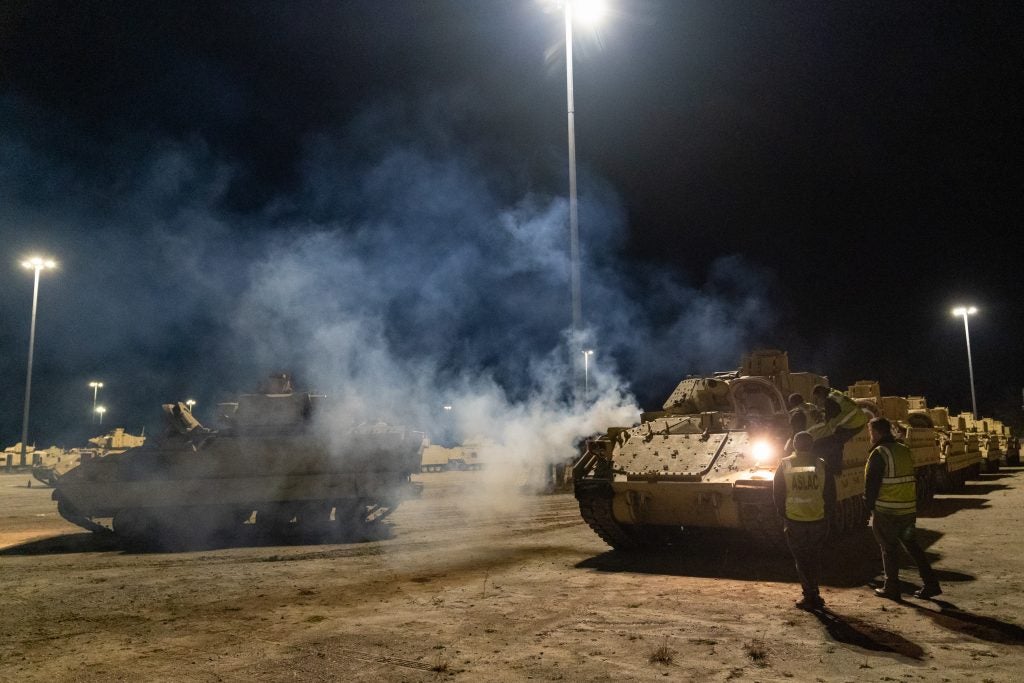
US Air Force Gen. Jacqueline Van Ovost, USTRANSCOM commander, was eager to highlight the importance of the United States’ transport capabilities and its instrumental role in transferring large amounts of equipment across the Atlantic, “the Ukraine operations underscore the importance of having an agile mobility force, with both a strategic airlift fleet that can delivery immediately, within hours of notification, and the available sealift that can deliver a much greater volume of materiel that is essential to delivering and sustaining a decisive force.”
The tracked Bradleys will be a welcome addition to Ukraine’s armored and mechanized formations, especially in the winter and spring mud. They will provide some much needed direct fire support capabilities with their 25mm chain guns and a considerable anti-tank capability with their Tube-launched, Optically-tracked, Wire-guided (TOW II) missiles which, with the 2B extended range variant, can engage targets out to 4.5km. Which Ukrainian units will receive the vehicles and how many personnel have been trained on them remains unknown.

